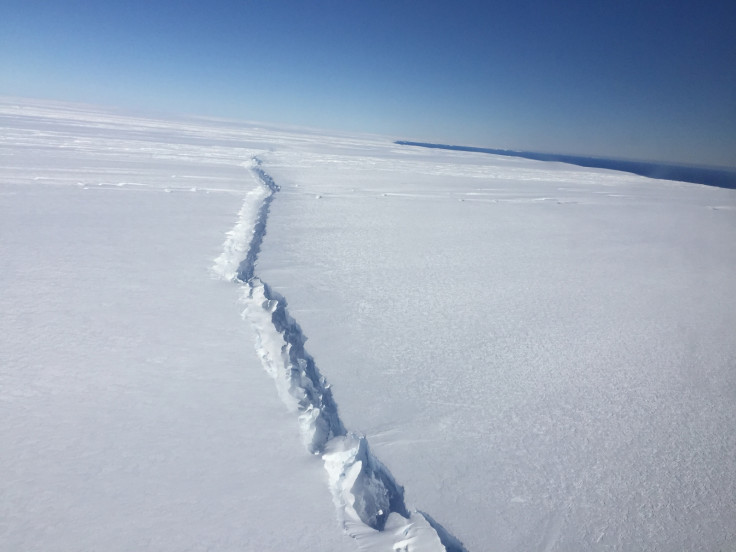Deep cracks are appearing inland at Pine Island Glacier in Antarctica
Fast-melting glacier is breaking apart in a manner previously unseen in an Antarctic ice sheet.
A huge Antarctic iceberg that broke off in 2015 has been traced back to a deep rift in the ice shelf, 20 miles from the edge of the sheet that first appeared in 2013.
This is the first time that a deep subsurface rift has been witnessed in the Antarctic ice, although the Greenland Ice Sheet has shown such rifts before. The research is published in Geophysical Research Letters.
A deep rift forming inland is unusual in Antarctica, where rifts usually form closer to the weakened edges of the ice sheet, says study author Ian Howat of Ohio State University.
"This latest event in the Pine Island Glacier was due to a rift that originated from the centre of the ice shelf and propagated out to the margins," says Howat. "This implies that something weakened the centre of the ice shelf, with the most likely explanation being a crevasse melted out at the bedrock level by a warming ocean."
The observation opens up the possibility that many more deep rifts could form and allow the West Antarctic Ice Sheet to break up more quickly, the authors say. There are many valleys of thin ice in the Pine Island Glacier further inland, which could be sites of weakness that could be prone to breaking apart.

"It's generally accepted that it's no longer a question of whether the West Antarctic Ice Sheet will melt, it's a question of when," says Howat. "This kind of rifting behaviour provides another mechanism for rapid retreat of these glaciers, adding to the probability that we may see significant collapse of West Antarctica in our lifetimes."
The rift was spotted by accident when researchers were using satellite pictures to test out some new image-processing software.
"We need to understand exactly how these valleys and rifts form, and what they mean for ice-shelf stability," he says. "We're limited in what information we can get from space, so this will mean targeting air and field campaigns to collect more detailed observations."
Pine Island Glacier accounts for about 5% of global sea-level rise at present, but this could increase if it begins a rapid retreat. Last week researchers found that the Pine Island Glacier began breaking apart as early as the 1940s.
© Copyright IBTimes 2025. All rights reserved.





















